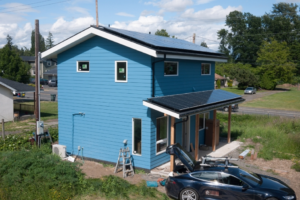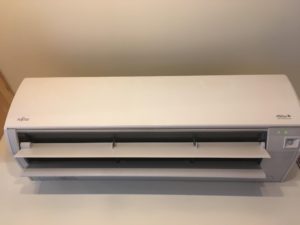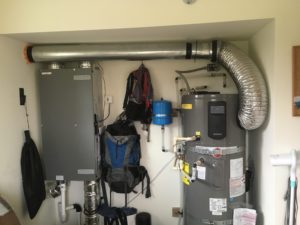Bellingham Affordable Net Zero Home
Case Study: Published | Updated: | | Bellingham | 380223222415- Category
- category_listing(s)
- Building Type
- Single Family
- Innovation
- Net-Zero Energy
- Jurisdiction
- Bellingham
- Parcel
- 380223222415
- Officials
- Brent Baldwin | Development Manager, Whatcom County Planning & Development Services
- Team
-
Ted Clifton, Jr
|
builder
Plumber
Specialty Contractor
- Ratings & Awards
-
Energy Star, EPA Indoor airPLUS. and 5-Star Built Green certified

The Bellingham Affordable Net-Positive Home is a new 2 bedroom home with a Built Green certification rating of 5 stars. The building is currently housing its original residents and has reliably provided enough power to allow them to live independent of the public power grid. Energy efficient Structural Insulated Panels (SIPs) construction required a special inspection process to meet code.
Normally during building construction, the framing is put up and then inspected. However, the use of SIPs panels cover the framing before it can be inspected. To comply with the code, the inspector was required to visually inspect the base plate connections before the SIPS could be installed. An engineer was also required to inspect them and sign off that they were installed correctly. Though these problems increased the challenge in building this home, the technologies they allowed the use of were vital to achieving the goal of the home.
| Code Requirement | Compliance Path |
| International Residential Code R610.4 SIP wall panels
SIPs for wall systems shall have a minimum panel thickness and be identified by grade mark or certificate of inspection issued by an approved agency. Exterior walls of structural insulated panel construction shall be designed and constructed in accordance with the provisions of Section R614. SIPs shall be fastened through both facing surfaces to other wood building components. Use of SIPs in residential homes beyond the scope of Section R614 will require a licensed engineer to approve the build plans before construction begins. |
|

